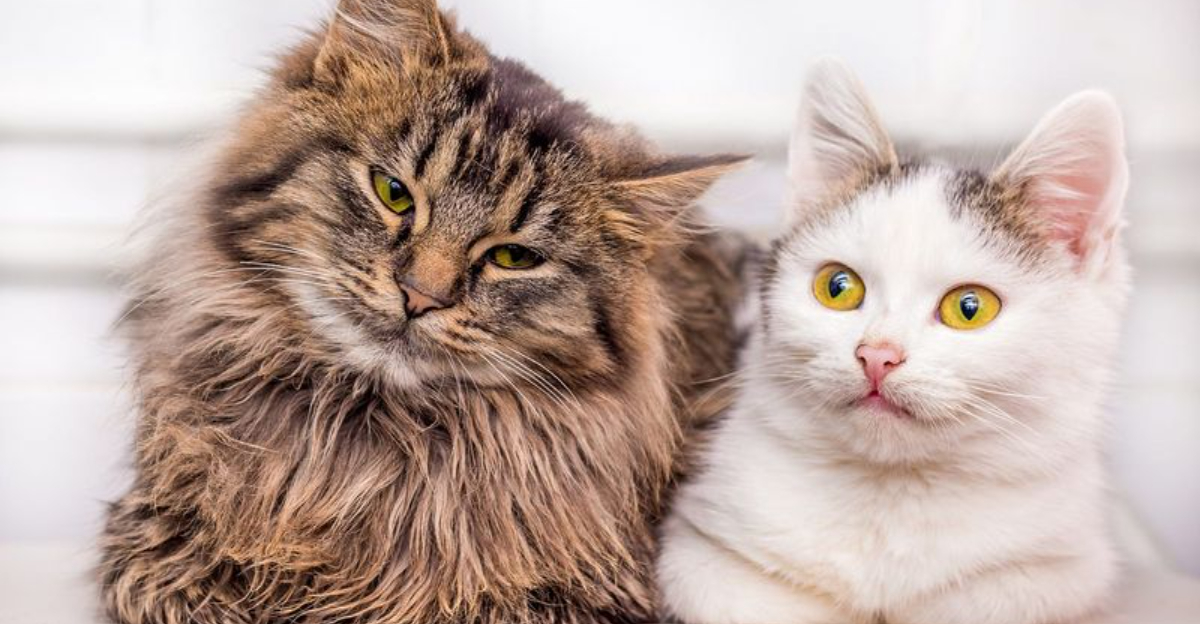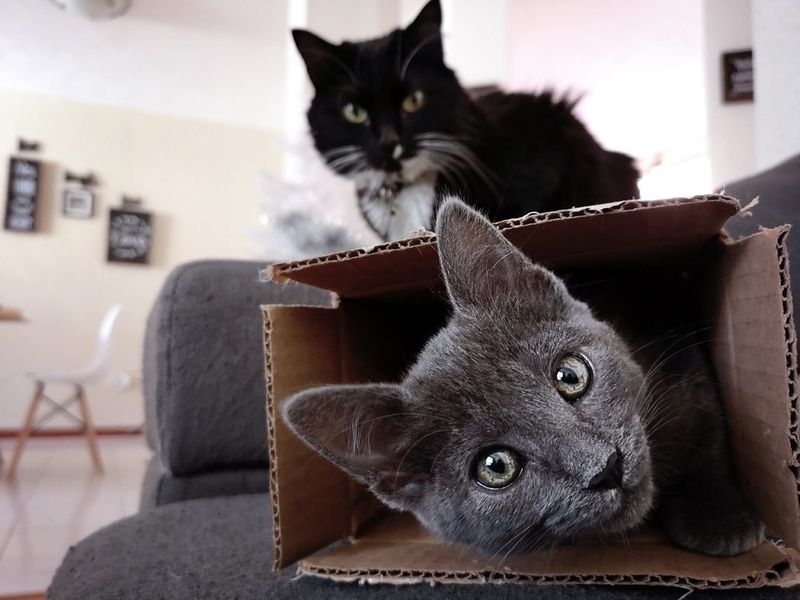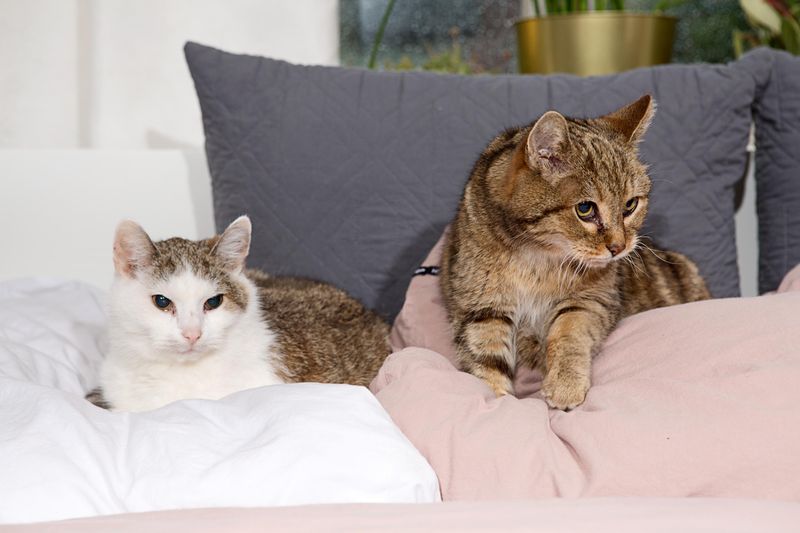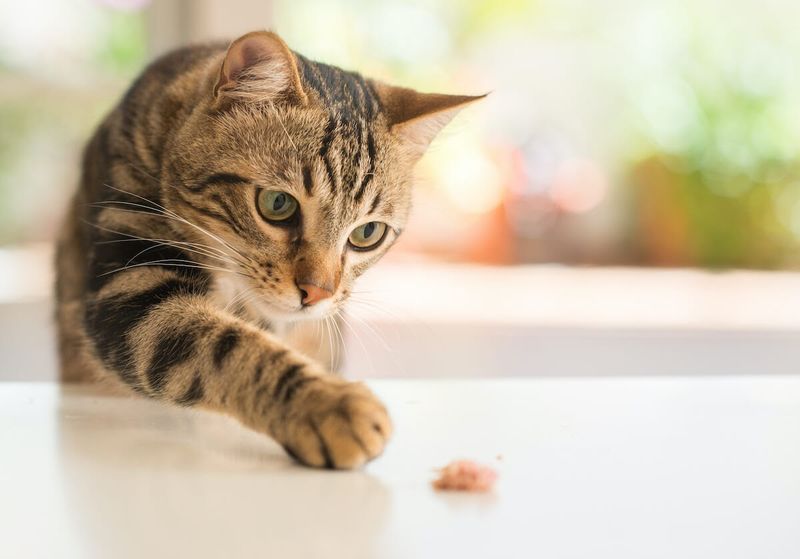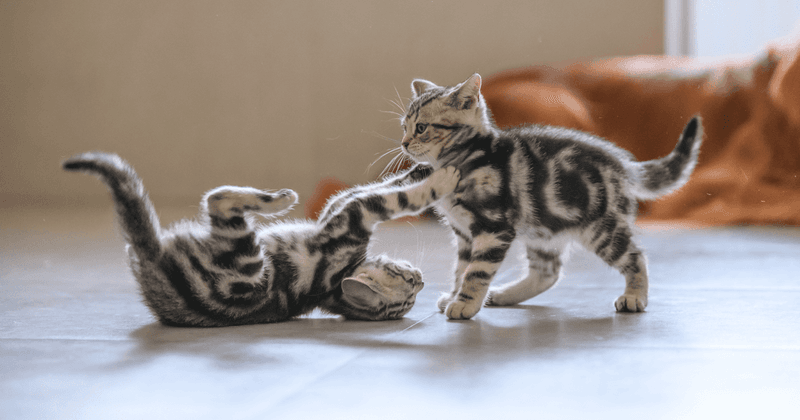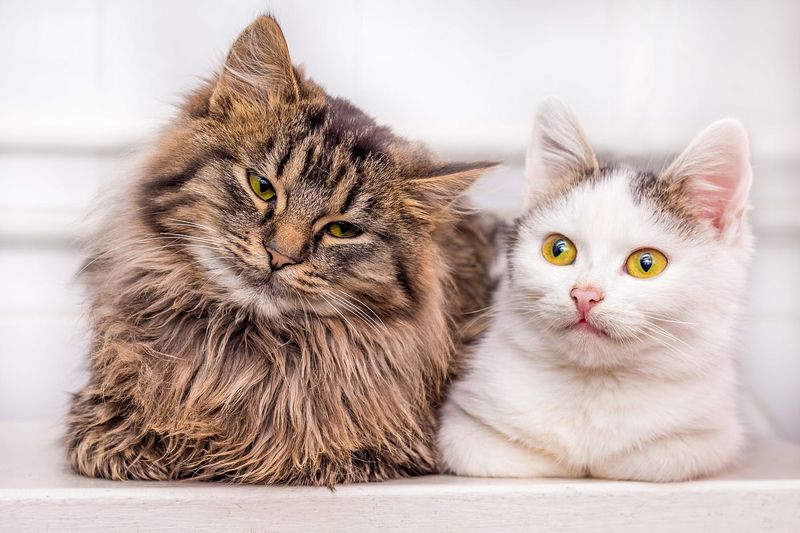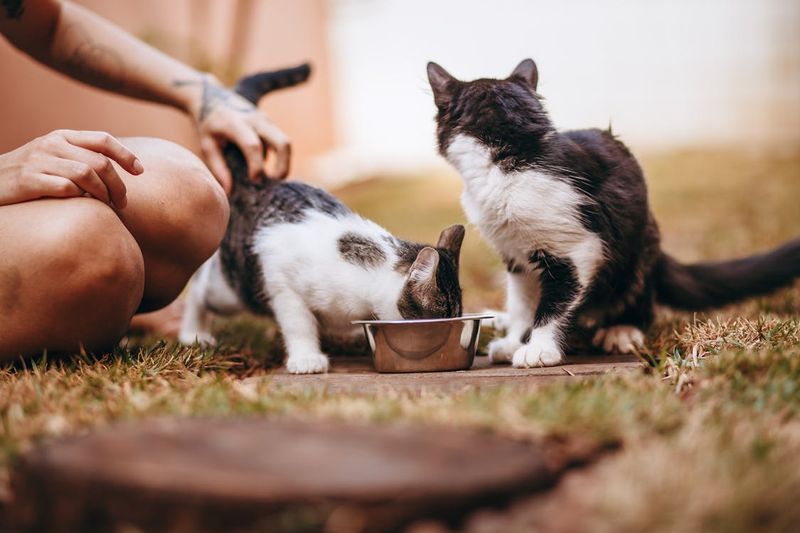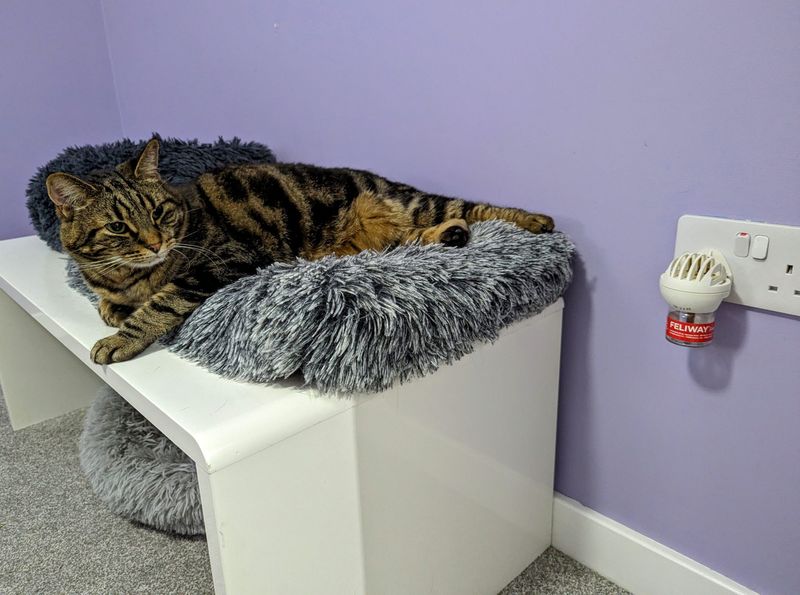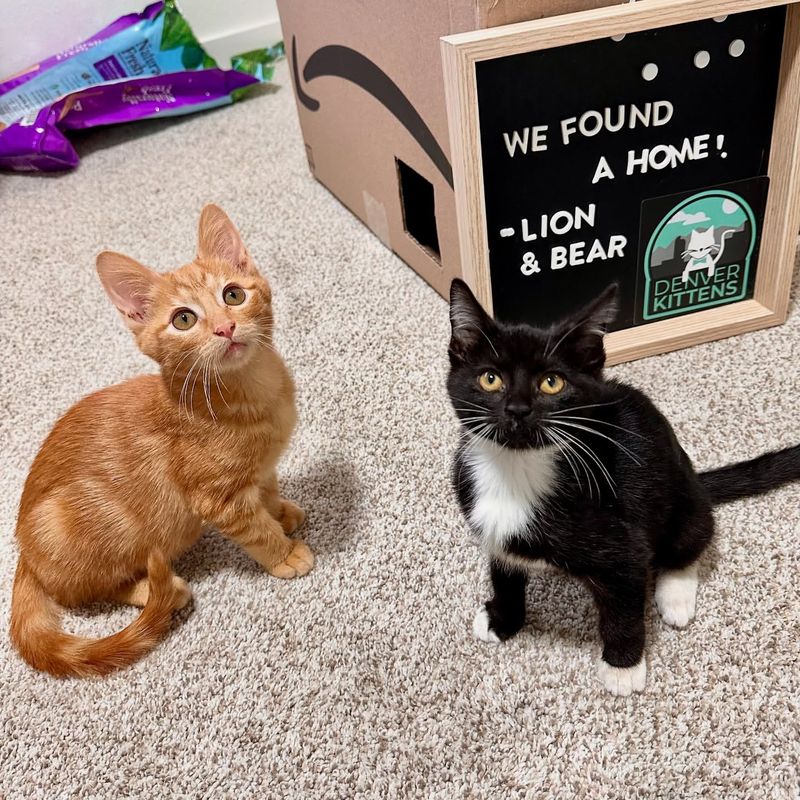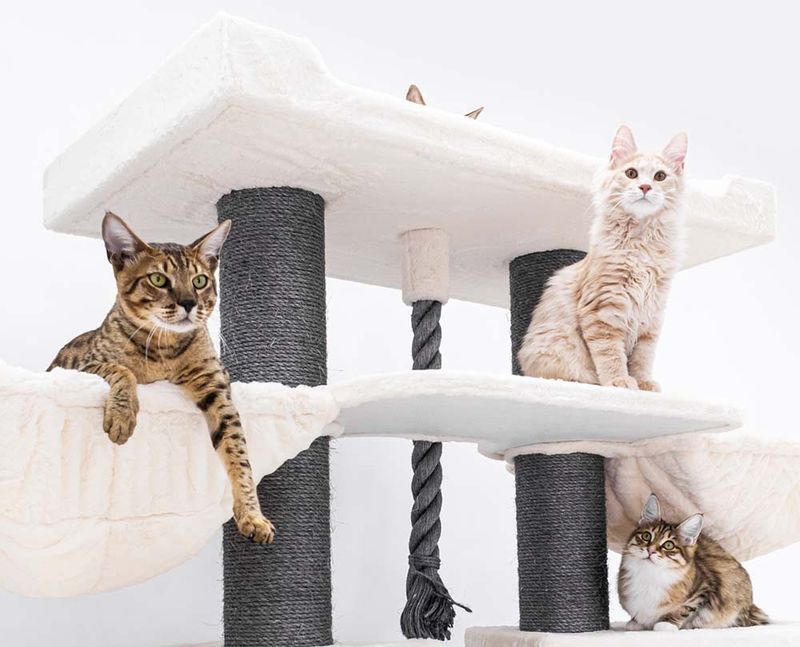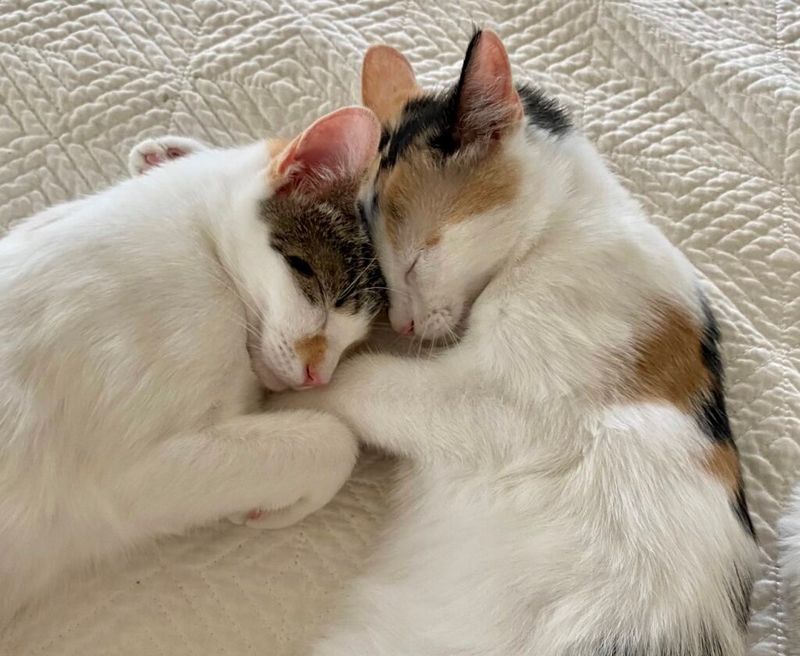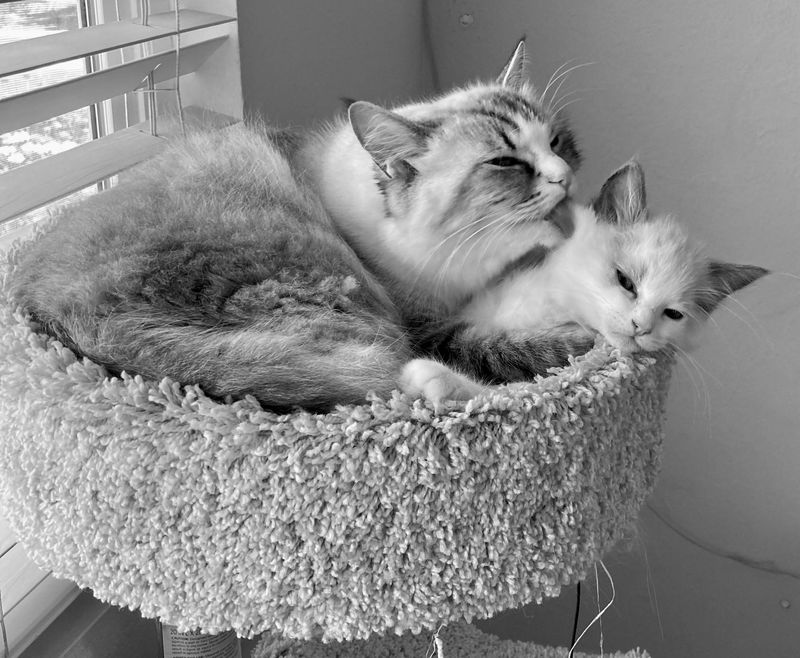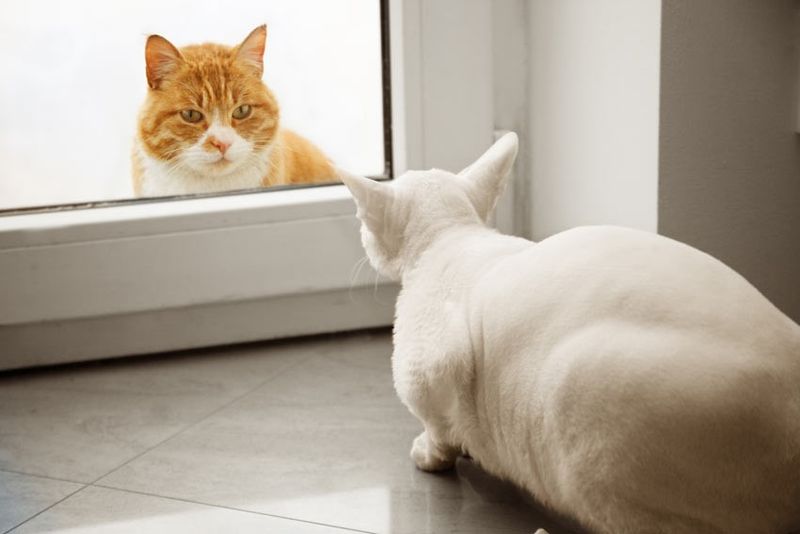📖 Table of Content:
- 1. Create Separate Spaces
- 2. Use Scent Familiarization
- 3. Supervised Introduction Sessions
- 4. Provide Ample Resources
- 5. Gradual Territory Expansion
- 6. Interactive Playtime Together
- 7. Establish Routine Consistency
- 8. Positive Reinforcement Techniques
- 9. Utilize Cat Pheromones
- 10. Respect Individual Personalities
- 11. Monitor Body Language
- 12. Safe Retreat Options
- 13. Veterinary Check-Up
- 14. Patiently Allow Natural Bonding
- 15. Swap Sleeping Items
- 16. Feed on Opposite Sides of a Door
- 17. Use a See-Through Barrier
Introducing a new kitten into a household with existing cats can be both an exciting and delicate process. Cats are territorial creatures, and changes to their environment can often lead to stress or unease. The key to a smooth transition lies in patience, gradual introductions, and understanding your cats’ behaviors.
While new kittens bring joy, their arrival can disrupt the familiar routines that your current cats rely on. Adjusting to the presence of a new feline family member requires careful management to avoid conflicts and anxiety. With the right approach, both the newcomer and your other cats can feel comfortable and secure.
Ensuring a peaceful introduction means taking small, thoughtful steps to help all cats adjust at their own pace. Creating a calm and controlled environment during the transition is essential for fostering positive interactions. By using these 17 strategies, it’s possible to help your cats form healthy relationships with the new kitten, ensuring a balanced and harmonious home.
1. Create Separate Spaces
Begin by establishing a distinct space for the new kitten. This allows your resident cats to adjust to the new scent and presence without feeling threatened. It also provides the kitten with a safe haven to explore and grow confident.
Place the kitten’s essentials like food, water, and litter boxes in this separate area. By doing so, you help prevent territorial disputes and make each cat feel secure.
Gradually, over a few days, swap bedding or toys between the cats to familiarize them with each other’s scents in a non-confrontational manner.
2. Use Scent Familiarization
Cats rely heavily on their sense of smell to understand their surroundings. Use this trait to your advantage by mixing their scents. Gently rub a cloth on the new kitten and then on the resident cat, and vice versa.
This introduces them to each other in a subtle way, reducing initial shock or aggression. It’s like exchanging friendly calling cards in the feline world.
Repeat this process several times a day. Over time, your cats will associate these scents with something non-threatening, helping to pave the way for a smoother introduction.
3. Supervised Introduction Sessions
Initial meetings between your resident cat and the new kitten should be closely monitored. Choose a neutral space in the house where neither cat feels territorial.
Allow them to observe each other from a distance initially, rewarding calm behavior with treats or gentle pats. Gradual exposure helps reduce anxiety and builds positive associations.
Supervised sessions should be short, gradually increasing in length as both cats show comfort. This methodical approach helps prevent stress and encourages a peaceful coexistence over time. Patience is key to fostering a lasting friendship.
4. Provide Ample Resources
To minimize rivalry, ensure that each cat has their own set of resources. Multiple food bowls, water stations, and litter boxes reduce competition and stress.
Additionally, provide various toys and scratching posts to keep them engaged and happy. By offering plenty of resources, you decrease the likelihood of conflicts, allowing each cat to thrive without feeling the need to compete.
Remember, a harmonious environment is one where all needs are met, reducing the potential for territorial behavior and fostering a content household.
5. Gradual Territory Expansion
Allow your kitten to explore their new home gradually, rather than all at once. Start by letting them roam a single room, then gradually increase their access as they grow more comfortable.
This slow introduction helps prevent overwhelming both the kitten and the resident cat. It gives them time to adjust to their new surroundings and each other’s presence.
Patience during this process is paramount. By expanding their territory slowly, you help build confidence and reduce anxiety for both the new and existing cats.
6. Interactive Playtime Together
Encourage joint play sessions using toys that both cats can chase and interact with. This shared activity helps them bond over fun and exercise.
Choose interactive toys like feather wands or laser pointers that require you to participate, ensuring each cat gets equal attention.
By associating the presence of the other cat with enjoyable experiences, you’re fostering a positive relationship. Over time, these play sessions can improve their interaction and help establish a harmonious dynamic between your cats.
7. Establish Routine Consistency
Cats thrive on routine. Maintaining a consistent schedule for feeding, playtime, and affection helps reduce stress during the transition period.
Stick to pre-existing routines as much as possible, allowing your cats to predict their day and feel secure despite the changes.
Consistency in their daily routine ensures that they don’t feel neglected and helps them adjust to the new kitten more easily. This stability is crucial for fostering a peaceful and accepting environment for both cats.
8. Positive Reinforcement Techniques
Reward calm and positive interactions between your cats with treats and praise. Positive reinforcement encourages good behavior and helps them associate each other’s presence with something favorable.
Use gentle words and petting as additional rewards. Over time, this method can help reinforce their trust and comfort around each other.
Remember to be patient and consistent. Positive reinforcement is a powerful tool in building a harmonious relationship between your cats, encouraging them to coexist peacefully.
9. Utilize Cat Pheromones
Cat pheromone diffusers can help ease the transition when introducing a new kitten. These diffusers release synthetic pheromones that mimic the natural comforting scents cats produce.
Place them in areas where your cats spend the most time. The calming effect can reduce tension and aggression, creating a more serene environment.
Pheromones are a useful tool to promote relaxation and help your cats adjust to each other’s presence. They offer a subtle yet effective way to foster peace during this transition period.
10. Respect Individual Personalities
Every cat is unique, with its own personality and preferences. Recognize and respect these differences as you introduce them to each other.
Some cats may quickly adapt, while others require more time and space. Tailor your approach to suit each cat’s comfort level and pace.
By acknowledging their individuality, you create a more accepting and understanding environment. This respect for their personal space and preferences is vital in fostering a harmonious relationship.
11. Monitor Body Language
Pay close attention to the body language of both cats during interactions. Signs of aggression or discomfort, such as hissing or flattened ears, indicate a need for more gradual introductions.
On the other hand, relaxed postures and gentle tail flicks suggest growing comfort and curiosity. Adjust your approach based on these cues to ensure a smooth transition.
Understanding feline body language is key to preventing conflicts and ensuring a peaceful integration. Your attentive observation can make all the difference in their relationship.
12. Safe Retreat Options
Ensure there are plenty of safe retreat spots for both the new kitten and resident cats. Having their own space to retreat to reduces stress and allows them to relax.
These spots can be cat trees, cozy beds, or quiet corners where they feel secure. By providing these havens, you help minimize potential conflicts and promote a sense of safety.
A well-structured environment with escape options ensures that each cat can enjoy their space without feeling trapped or anxious, nurturing a tranquil coexistence.
13. Veterinary Check-Up
Before introducing your new kitten to resident cats, a veterinary check-up is essential. Ensure the kitten is healthy, vaccinated, and free of parasites.
A clean bill of health helps prevent the spread of illnesses and reassures you that the new addition won’t pose a risk to other pets.
This proactive step is crucial for maintaining the well-being of all your feline companions. It sets the stage for a safe and successful introduction, prioritizing the health and happiness of your cats.
14. Patiently Allow Natural Bonding
Finally, allow the bond between your cats to develop naturally. Rushing the process can lead to stress and setbacks. Let them set their pace.
Some cats may form a friendship quickly, while others need more time. Your role is to provide a supportive environment and watch for signs of growing camaraderie.
Celebrate small milestones, like relaxed proximity or shared play, as they indicate progress. With patience and understanding, your cats can grow to enjoy each other’s company, creating a loving and peaceful home.
15. Swap Sleeping Items
Start with a gentle introduction by swapping the sleeping items of your kitten and resident cats. This trick allows both parties to become familiar with each other’s scent without direct contact.
Imagine your kitten’s plush blanket soaking up the essence of your home, while your cat’s favorite bed carries its comforting aroma.
Cats rely heavily on their sense of smell to navigate their world, and this swap can bridge the gap between old and new. By the time they meet, those scents will be as familiar as a favorite tune.
16. Feed on Opposite Sides of a Door
To build positive associations, try feeding your cats on opposite sides of a closed door. Imagine them eagerly munching away, only a few paws apart, yet still separated.
This setup allows them to associate mealtime—a happy occasion—with the scent of their new companion.
The anticipation as they sniff through the door’s small gap fosters curiosity and acceptance. Over time, this routine can pave the way for face-to-face encounters, knitting a bond through shared mealtime harmony.
17. Use a See-Through Barrier
Set up a see-through barrier to allow your cats to observe each other from a safe distance. Picture an eager kitten and a composed adult cat peering through a clear pet gate, exchanging glances and gentle paw touches. This visual introduction reduces anxiety and territorial aggression, as each cat can retreat if needed.
Their interactions become a dance of curiosity and caution, gradually building confidence and camaraderie.
This step-by-step visibility promotes a stress-free integration, making every glance a building block for friendship.
